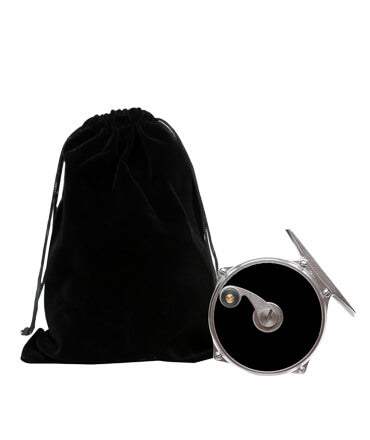Fly Line: Choosing Budget-Friendly Skagit Lines for Optimal Performance
Selecting the right fly line can significantly enhance our fishing experience, particularly when targeting specific techniques like Skagit casting. We can find budget-friendly Skagit lines that perform well without breaking the bank. Knowing how to pair these lines with our rods is essential for optimal performance and casting efficiency.

Understanding the differences between Skagit and Scandi lines is crucial for making informed choices. While both are designed for specific casting styles, each has unique characteristics that suit different fishing conditions. Knowing these differences can help us decide which line meets our needs best.
When targeting larger rivers, the choice between Skagit and Spey lines becomes particularly important. Skagit lines excel in delivering heavy tips and larger flies, making them ideal for big water scenarios. By grasping these distinctions, we can enhance our effectiveness on the water and improve our overall fishing success.
Understanding Fly Lines

In our exploration of fly lines, we focus on the basics of fly line design and the distinctions between Skagit, Scandi, and Spey lines. Each type serves specific purposes and adapts to various fishing conditions effectively.
Fly Line Basics
Fly lines are crucial for delivering flies to fish. They come in various designs, tapering, and grain weights, affecting casting and presentation.
The three major types are:
- Weight Forward: Ideal for beginners, combines heavier front taper for easier casting.
- Double Taper: Offers versatility for delicate presentations.
- Shooting Head: Great for long distances and specific techniques.
Understanding the grain weight of a fly line is essential. The right grain weight matches your rod, allowing optimal performance. For instance, a rod rated for 400 grains requires a corresponding line to prevent casting difficulties.
Differences Between Skagit, Scandi, and Spey
Skagit lines are short and heavy, designed to launch large flies more effectively. They excel in shorter casts and larger waters. Skagit lines utilize a unique shooting head design, enhancing casting efficiency, especially in windy conditions.
Scandi lines, contrastingly, are longer with a more gradual taper. They are suited for delicate presentations and reach further distances. These lines provide a more traditional feel, making them favored among anglers who prefer finesse.
Spey lines encompass a broader category, with both Skagit and Scandi lines falling under this umbrella. While Skagit focuses on heavy, short-distance casts, Spey lines can be utilized across various water conditions. Understanding these distinctions allows us to select the most effective line for our fishing needs.
Skagit Lines in Focus

In our exploration of Skagit lines, we assess budget-friendly options, how to select the right line for different rods, and the significance of Skagit tips and heads. Understanding these aspects is crucial for maximizing our fly fishing experience.
Best Budget-Friendly Skagit Lines
When searching for budget-friendly Skagit lines, we can consider options like the AirFlo Rage and the Rio Skagit Max. Both of these lines provide great performance without breaking the bank.
| Line | Price Range | Grain Weight Options | Key Features |
|---|---|---|---|
| AirFlo Rage | $40 - $70 | 420 - 600 grains | Great for distance casting |
| Rio Skagit Max | $50 - $90 | 480 - 650 grains | Smooth casting and durability |
These lines are engineered to handle various conditions and can perform well with both floating and intermediate tips.
Choosing the Right Skagit Line for Your Rod
Selecting the appropriate Skagit line involves considering our rod's grain weight and action. A general rule is to choose a line that matches the rod's recommended grain window.
For example:
- Light rods (3-5 weight): Aim for lines around 300-400 grains.
- Medium rods (6-8 weight): Choose lines in the 400-500 grain range.
- Heavy rods (9-11 weight): Opt for lines around 500-600 grains.
Matching the line weight ensures optimal loading and performance, enhancing our casting efficiency and accuracy.
The Role of Skagit Tips and Heads
Skagit tips and heads play a vital role in our setup. The tip primarily dictates the line’s sink rate and presentation.
Common Types of Tips:
- Floating Tips: Best for surface fishing and when targeting fish near the top.
- Intermediate Tips: Suitable for slightly deeper presentations.
- Heavy Tips (e.g., T14): Designed for deeper waters, allowing us to reach fish in faster currents.
When pairing tips with Skagit heads, we should match the tip’s weight to the head’s grain weight for smooth transitions. This setup helps achieve the desired depth and improves our chances of a successful catch.
Casting Techniques and Considerations
Understanding various casting techniques is essential for maximizing our effectiveness on big rivers. Each method has its unique advantages and implications for our gear and style. We will explore key distinctions between casting styles, address potential flaws, and discuss anchor types to refine our skills.
Skagit vs Spey Lines for Big Rivers
When fishing big rivers, the choice between Skagit and Spey lines can significantly impact our success. Skagit lines are designed for short, powerful casts that excel in demanding conditions. They are ideal for delivering weighted flies quickly and accurately, especially in heavy currents.
Conversely, Spey lines feature longer belly sections, allowing for smooth, graceful casts. This line style excels in lighter winds and can deliver longer distances. For big rivers, the Skagit approach is often advantageous due to its fast loading capabilities, enabling us to cast large, heavy flies efficiently.
Identifying and Correcting Casting Flaws
Recognizing common casting flaws is vital for improving our techniques. Some typical issues include:
- Inconsistent timing during the forward stroke
- Incorrect body positioning
- Poor weight transfer between strokes
We can benefit from feedback by seeking a casting instructor to analyze our technique. Simple drills can help us address these flaws. Practicing each segment of our cast in isolation allows us to build muscle memory and improve casting efficiency.
Differentiating Sustained Anchor and Touch-and-Go Casts
When employing Skagit techniques, understanding the difference between sustained anchor and touch-and-go casts is essential.
-
Sustained anchor casts require our line tip to be anchored in the water at the start of the cast. This method allows for a more powerful delivery and is beneficial in strong currents.
-
Touch-and-go casts involve minimal contact with the water and facilitate quicker releases. This technique is advantageous when we need to cast in tight spaces or during windy conditions.
Both methods have their place in our casting arsenal, and practicing each will enhance our versatility on the water. We should evaluate which technique suits our style and the specific conditions we face.











